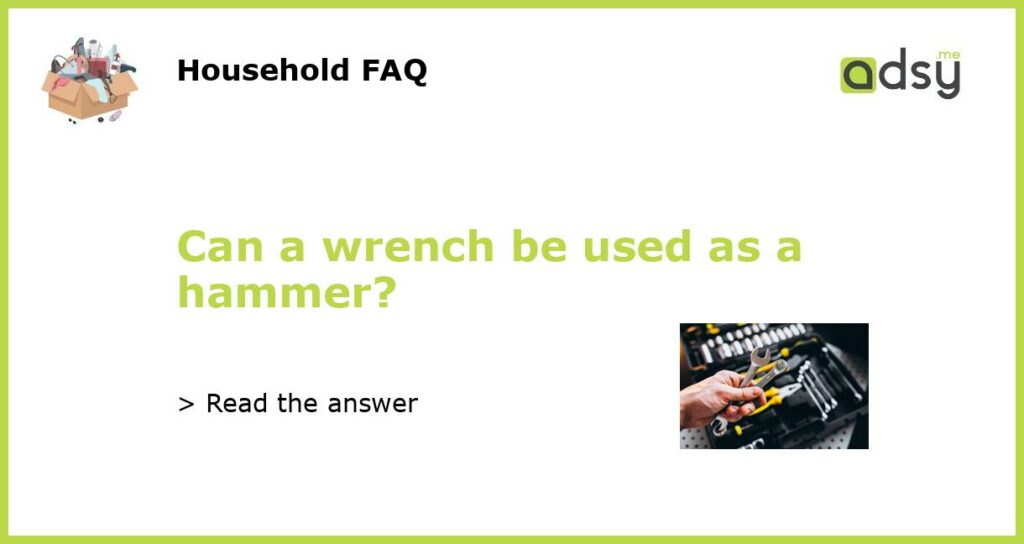Yes, a wrench can be used as a hammer in certain situations
Many people have asked the question whether a wrench can be used as a hammer. While it is not the intended use for a wrench, there are situations where it can be effective. In this article, we will explore the scenarios where a wrench can be used as a hammer and the potential risks involved.
Scenario 1: Emergency situations
In emergency situations, improvisation may be necessary. If you find yourself in a situation where you need to drive a nail or secure an object but don’t have a hammer on hand, a wrench can be a suitable substitute. The solid, heavy head of the wrench can be used to strike the nail or object with enough force to accomplish the task at hand.
Scenario 2: Transportability
One of the advantages of using a wrench as a hammer is its transportability. Wrenches are commonly found in toolboxes and can easily be carried around. In situations where space or weight is limited, carrying a wrench instead of a hammer can be a practical solution. However, it is important to note that using a wrench as a hammer too frequently may cause damage to the wrench and compromise its functional integrity.
Risks and considerations
While a wrench can be used as a hammer in certain situations, it is important to consider the risks and potential drawbacks. First and foremost, using a wrench as a hammer can lead to damage to both the wrench and the object you are striking. Wrenches are not designed to absorb the impact of hammering and may become deformed or damaged when used in this way.
Additionally, using a wrench as a hammer can pose a safety risk. The handle of a wrench is typically longer and more slender than that of a hammer, making it more difficult to have proper control and accuracy when striking. This can increase the likelihood of missed strikes or accidental injury.
In conclusion, while a wrench can be used as a hammer in certain situations, it is not recommended as a long-term solution. The risks of damage to the wrench and safety hazards outweigh the convenience in most cases. It is always best to use the appropriate tool for the job at hand. If a hammer is not available, consider alternative options such as borrowing one, purchasing one, or utilizing other common household objects like a mallet or the back of a screwdriver as a temporary substitute.






